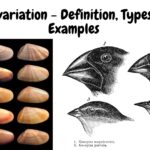AS and A Level Biology 112 Views 1 Answers
Sourav PanLv 9October 28, 2024
Describe the formation of a glycosidic bond by condensation, with reference to disaccharides, including sucrose, and polysaccharides
Describe the formation of a glycosidic bond by condensation, with reference to disaccharides, including sucrose, and polysaccharides
Please login to save the post
1
Please login to submit an answer.
Sourav PanLv 9May 15, 2025
A glycosidic bond forms when two monosaccharides join together through a condensation reaction (also called dehydration synthesis), where a molecule of water is released. This bond can form between various hydroxyl groups of the participating monosaccharides, creating either an α-glycosidic or a β-glycosidic bond, depending on the orientation of the linkage.
Formation of a Glycosidic Bond in Disaccharides
- Example with Sucrose:
- In the formation of sucrose (a non-reducing disaccharide), an α-glucose molecule and a β-fructose molecule join together.
- The glycosidic bond forms between the hydroxyl group on the C1 of glucose (α-1) and the C2 of fructose (β-2), resulting in an α(1→2) glycosidic bond.
- As a result of this linkage, both the anomeric carbons are involved in the bond, making sucrose a non-reducing sugar with no free aldehyde or ketone groups.
- Example with Maltose:
- In maltose (a reducing disaccharide), two α-glucose molecules join together.
- The glycosidic bond forms between the C1 of one glucose and the C4 of the second glucose, creating an α(1→4) glycosidic bond.
- Unlike sucrose, maltose retains a free anomeric carbon (C1 of the second glucose unit), allowing it to act as a reducing sugar.
Formation of Glycosidic Bonds in Polysaccharides
- Polysaccharides are formed by linking multiple monosaccharides through repeated glycosidic bonds. The specific types of glycosidic linkages and the sequence of monosaccharides determine the structure and function of the polysaccharide.
- For instance, starch (in plants) and glycogen (in animals) are storage polysaccharides composed of α-glucose units connected primarily by α(1→4) glycosidic bonds, with branching points formed by α(1→6) glycosidic bonds.
- Cellulose, a structural polysaccharide in plant cell walls, consists of β-glucose molecules linked by β(1→4) glycosidic bonds. This arrangement allows cellulose chains to form strong, rigid fibers due to hydrogen bonding between adjacent chains.
0
0 likes
- Share on Facebook
- Share on Twitter
- Share on LinkedIn
0 found this helpful out of 0 votes
Helpful: 0%
Helpful: 0%
Was this page helpful?




